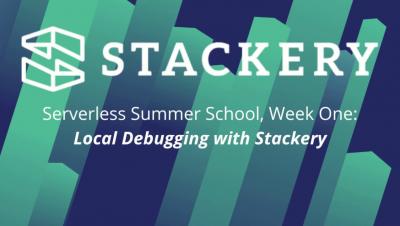Operations | Monitoring | ITSM | DevOps | Cloud
Cloud
The latest News and Information on Cloud monitoring, security and related technologies.
Serverless Summer School (SSS) Week 2: Implementing the Wild Rydes Front-End
Serverless Summer School (SSS) Week Three: Building the Wild Rydes Back-End
Why Zenoss? - Wendy M. Pfeiffer, CIO, Nutanix
Software Engineers: Confidence Matters Just as Much as Ability
Software engineering is a skilled task; those who obtain the experience and credentials necessary to become engineers know this, as do their employers. Engineers have an overarching goal of using these skills to construct experiences that enable end-users to complete a task successfully and they hope to provide enjoyment and comfort along the way. Anyone who has written software used by a decent number of people knows how daunting this task is.
SQS and Lambda: a Quick Tutorial and How to Handle Failure Modes
Since Lambda added SQS as an event source, there has been a misconception that SQS is now a “push-based” service. This seems true from the perspective of your function because you no longer have to poll SQS yourself. However, SQS itself hasn’t changed – it is still very much a “poll-based” service. The difference is that the Lambda service is managing the pollers (and paying for them!) on your behalf.
Multi-Cloud Security Myths
As multi-cloud architectures grow in popularity, more and more organizations will start asking how to secure multi-cloud environments. Some will conclude that a multi-cloud architecture requires a fundamentally different approach to cloud security. That’s one example of a myth about cloud security in a multi-cloud architecture. Let’s take a look at why this assumption is flawed, along with some other common myths about multi-cloud security.
Stackery Professional Serverless Tooling Now Available on the AWS Marketplace
Stackery is now available on the Amazon Web Services (AWS) Marketplace! This is great news for development teams excited by the prospect of building and modernizing applications using AWS Lambda, DynamoDB, Kinesis, API Gateway, Fargate, and the rest of the growing menu of serverless capabilities. AWS teams can start their serverless journeys with prescriptive and flexible tooling that extends AWS tools and services with less friction in the purchasing process.
The World Of Cloud-Native Monitoring
Logs have always been a crucial part of applications, providing insight into an application’s every operation and auditing all of its activities. Yet to date, logs have been used primarily for researching incident details or applicative failures. Only recently have R&D and operations teams started paying closer attention to logs in an effort to identify incidents as they occur and recognize trends that can prevent future pitfalls.
Monitoring AWS Lambda with Blue Matador
AWS Lambda is one of AWS’s most popular cloud services. It allows serverless applications to be built by dividing up an application into functions that can be triggered by changes in your system. Since they are critical to the health of your application, properly monitoring Lambda functions is a top priority for most teams. In this blog post, we will go over how Blue Matador monitors Lambda functions automatically and without configuration. We will cover the following topics:











